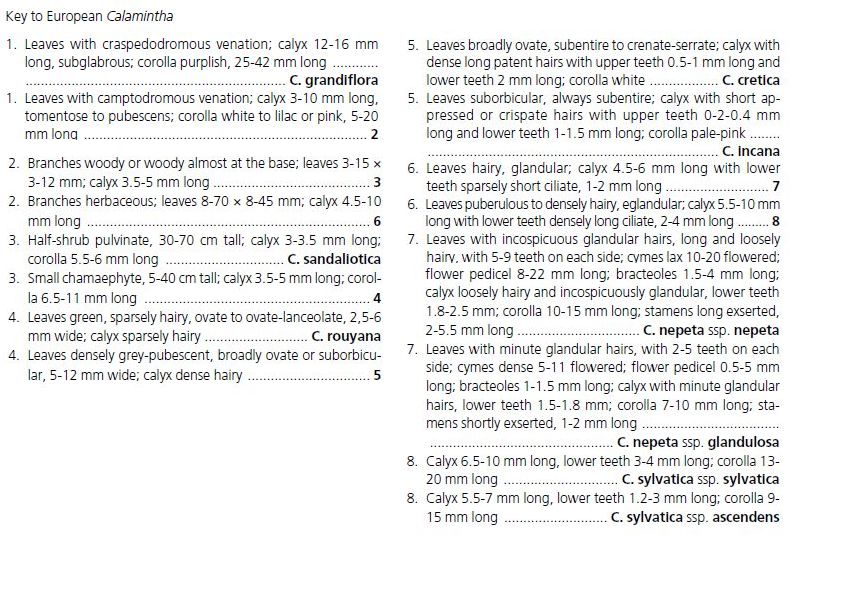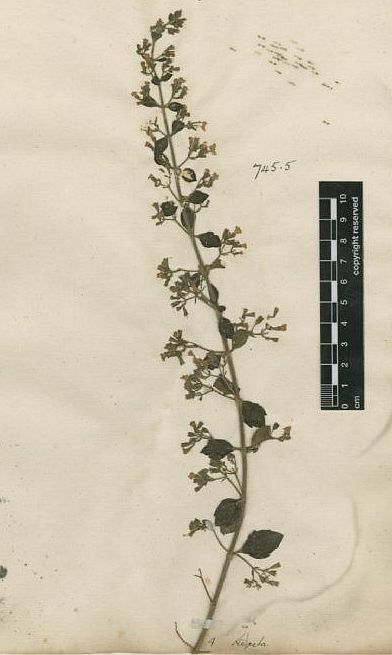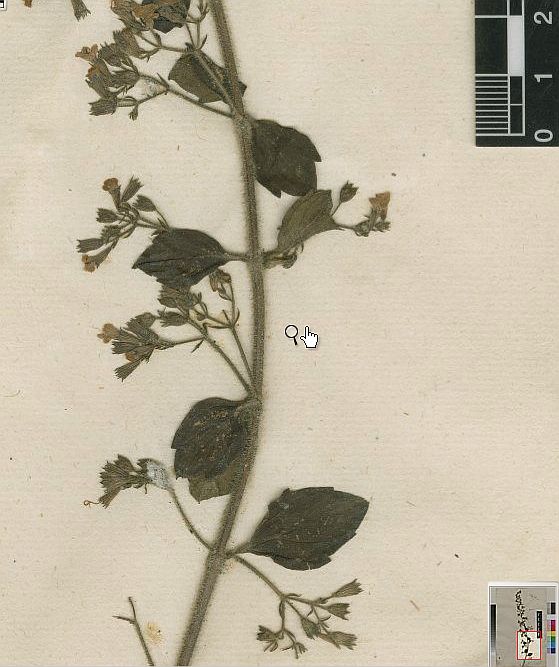home flora of romania endangered species of transylvania endangered habitats of transylvania
Calamintha nepeta (L.) Savi ssp. transsilvanica (Jav.) comb. nov. prov.
|
A highly controversial taxon which can be a local endemic of the 'Saxon Land' in southern Transylvania. It was frequently mistaken in the area for its congeneric Calamintha sylvatica Bromf. despite the obvious ecological and morphological discrepancies. A lot of confusions between Calamintha nepeta, Calamintha grandiflora and Calamintha sylvatica are also encountered on the internet when searching for images for these species.First of all, as it can be seen also in the sketch from plate 435 in Javorka et Csapody (1934) - The Illustrated Hungarian Flora, Budapest (in Hungarian) and from descriptions in the most recent Romanian flora books (Ciocarlan, 2008) the Transylvanian taxon can be distinguished in the following clear ways from Calamintha sylvatica Bromf. (Calamintha menthifolia Host.) and probably from the typical Calamintha nepeta (L.) Savi (Calamintha einseleana F.W. Schultz). 1. The presence of the short sterile shoots in the axila of the leafs from the stems is a normal feature in Calamintha einseleana which is virtually not present in Calamintha sylvatica. 2. The calyx in Calamintha nepeta is shorter than 5 mm and the inferior two calicinal teeth are not more than 2 mm long. Also the corolla is between 8-12 mm long (the value of 5-6 mm given in Flora Reipublicae Popularis Romanicae vol. 7 pp. 284 for Calamintha nepeta var. subisodonta (Borbas) Hayek f. transsilvanica Jav. encountered in the Saxon Land must be erroneous in our oppinion according also to the image of the taxon published in the same book on plate 49 fig. 1). In Calamintha sylvatica the calyx is between 6-10 mm long, the two inferior calicinal teeth are between 2-4 mm long and the corolla is between 15-22 mm long (10-16 mm long in ssp. ascendens ). All these features can be clearly seen in some photographs below where the calyx and the corolla of the Transylvanian plants were posed against a grid where the interval between two lines is 5 mm large. In addition the hairs in the opening of the calyx tube are exsert in Calamintha einseleana and included in the calyx tube in Calamintha sylvatica. Also this feature can be seen in some of the photographs below. 3. According to our observations and the illustrations in Javorka et Csapody (1934) and Savulescu, T. (coord., 1961) - Flora Reipublicae Popularis Romanicae 7: 281 pl. 49 the three upper calicinal teeth in Calamintha sylvatica are clearly recurved while in Calamintha nepeta they are pointed forward. 4. Calamintha nepeta 'transsilvanica' is a strict xeric (not even a mesoxeric) plant associated with Stipa capillata at Cris (Mures county, on Coasta Ciobanului steep slope) and at Apos, Sibiu county and Cleistogenes serotina north from Valchid, Sibiu county (two points along Sesului Valley). On the other hand, Calamintha sylvatica is mostly a mesophile plant which can be found sometimes in mesoxeric conditions. 5. In its 'locco classico' from Transylvania Calamintha nepeta ''transsilvanica' seems to be extinct (between Copsa Mare and Biertan, Sibiu county). 6. The 'transsilvanica' taxon which was ranked from simple form up to subspecies by various authors seem to be distinguished by 'floral whorls very distant much longer than the bracts' and also 'at least in part the floral pedicels much longer than the bractsand longer than the calyx' which will give to the inflorescence a much diffuse aspect than in the typical einseleana (nepeta) where the inflorescence is very compact due to the floral pedicels which are much shorter than the calyx.. Therefore in the illustration from Javorka and Csapody (1934) and Savulescu (1961) there is a clear difference between Calamintha einseleana (named there Calamintha nepeta (L.) Savi) and 'transsilvanica '. 7. Comparisons with the Linnean holotype of Calamintha nepeta (L.) Savi (Melissa nepeta L.) are necessary in detail. Images of the holotype are provided at the bottom of this page and by using the link in the top left corner of this page. According with what was said above it would be interesting to have a morphological and mollecular comparison between the populations of 'transsilvanica' and populations of einseleana from Croatia and north-eastern Italy and with other similar species from the genus. Illustrations of Calamintha nepeta (C. einseleana) from Croatia and Italy can be seen here. Illustrations with Calamintha sylvatica can be seen on this site here. The illustration below is from Javorka et Csapody (1934): to the left, Calmintha sylvatica, in the mid part the typical Calamintha nepeta from Croatia and to the right Calamintha 'transsilvanica'. Note the absence of the caulinar short sterile shoots in the first species and their presence in the last two taxa, also the calyx characteristics.
Below there is a key to Calamintha genus s.str. for Europe, provided by Bacchetta, G., Brullo, S. (2005) - Calamintha sandaliotica (Lamiaceae) a new species from Sardinia. Annales del Jardin Botanico de Madrid, 62 (2): 137-141. The name einseleana is replaced by nepeta and menthifolia by sylvatica.
In the following figure there are illustrations from the same article revealing characters of the calyx, the flowers and the leaves from Calamintha nepeta (einseleana) typical species and ssp. galndulosa (Flora Europaea reffers to einseleana as the hybrid between Calamintha nepeta ssp. nepeta and Calamintha nepeta ssp. grlandulosa). In the figures, a1, b1, c1, d1 reffers to Calamintha nepeta from Sicily, a2, b2, c2, d2 reffers to Calamintha nepeta ssp. glandulosa. Please remark in a1 the floral pedicel which is much shorter than the calyx in the typical Calamintha nepeta (einseleana) while in the Transylvanian plants from this species they are much longer than calyx and bracts at least in part giving to the inflorescence a lax aspect.
Apos, Sibiu county in the upper part of Coves valley, a small isolated population 46 degr. 3'15.82"N, 24 degr.35'35.09"E. dr. Alexandru Badarau, alexandru@transsilvanica.net North of Valchid, Sibiu county, a small sunny slope above the mid part of Ses valley called 'Sesul Mic', 46 degr.11'21.61"N, 24 degr. 34'18.71"E. Rich large population. dr. Alexandru Badarau, alexandru@transsilvanica.net
North of Valchid, Sibiu county a small glade on a sunny slope above the lower part of Ses valley near it confluence with Biertan valley. Rich large population at 46 degr. 11'38.13"N, 24 degr. 34'46.20"E. dr. Alexandru Badarau, alexandru@transsilvanica.net
In the following images there are the illustrations of the original Linnean specimen of Calamintha nepeta (L.) Savi
|














